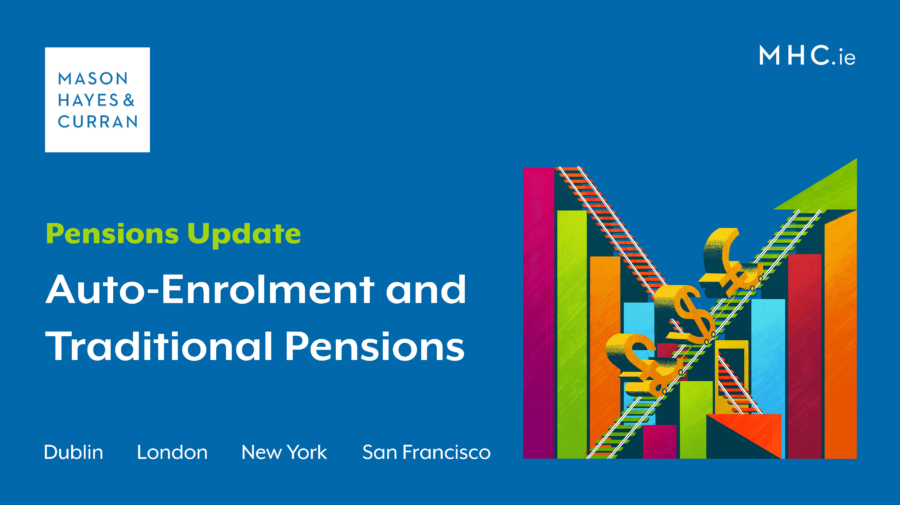
As most will know, auto-enrolment is set to be introduced in 2024. Minister Heather Humphreys has confirmed that this new employee savings system will be an alternative to employer occupational pension schemes, rather than an addition to them. Our Pensions team consider what this choice will mean for employers.
Minister Heather Humphreys has confirmed that auto-enrolment will be up and running in 2024. Most believe this will be difficult to achieve, though there has been progress. She says it aims to “build a culture of saving for retirement in Ireland.” Speaking at the Fine Gael Party think-in, the Minister gave an update on the status of the “transformative” scheme and confirmed that she will bring forward the legislation to underpin the scheme this quarter.
Interestingly, the Minister confirmed that a person can only have one pension pot. She noted that the two schemes cannot “run in parallel”, meaning that an employee will be in a position to either avail of auto-enrolment or a private pension, but not both. Essentially, employers will need to decide if they should enter the new system or obtain a flexible traditional occupational pension scheme.
Preparation
In light of the Minister’s recent comments, employers should begin to consider what approach they will take once auto-enrolment comes into operation. Certain characteristics of each scheme may be more appealing than the other, depending on the needs and wants of the employer. Some employers, for example, may choose to obtain a traditional occupational pension scheme as it affords generous tax relief.
In addition, contributions made under traditional schemes offer much greater flexibility including Additional Voluntary Contributions, whereas the proposal for auto-enrolment operates under a much more rigid structure. The sufficiency of the retirement benefits that will be provided by auto-enrolment is a concern. However, employees who pay no tax, or are taxed within the lower rate of 20% may benefit from the state subsidy under the auto-enrolment scheme, which works out at effective relief at the rate of 25%.
Contributions
Employers who decide to avail of the auto-enrolment scheme will be responsible for recording and managing the data related to their participating employees. However, the Central Processing Authority will be responsible for the vast majority of the administration work for the auto-enrolment system.
Where an employer chooses a traditional occupational pension, including a master trust, the administration work is typically handled in full by the pension provider, such as a life office. In terms of auto-enrolment contributions, the present proposal is that, for every €3 that an employee contributes, the employer must also contribute €3, while the State will contribute €1. Contribution rates increase over a 10-year period, starting at 1.5% and capping at 6% of the employee’s net income.
When it comes to traditional pensions, the contribution rates are very flexible and tax relief is determined by the age-related percentage limits which can be found here
Comment
Employers should now begin to weigh up the benefits of each system from a financial and resourcing perspective and make an informed decision. Employers may also wish to review any template contracts they might have which may need updating to reflect any changes and to ensure terms will not hinder implementation of the new system.
The Heads of Bill for auto-enrolment have been approved since July 2022, and the legislation has now been listed for Priority Publication in the Autumn Session. Further updates will be provided once the legislation has been put forward by the Minister.
For more information on auto-enrolment, contact a member of our Pensions team.
The content of this article is provided for information purposes only and does not constitute legal or other advice.







